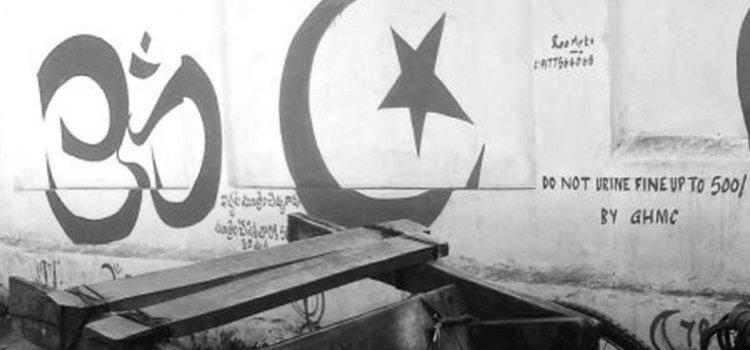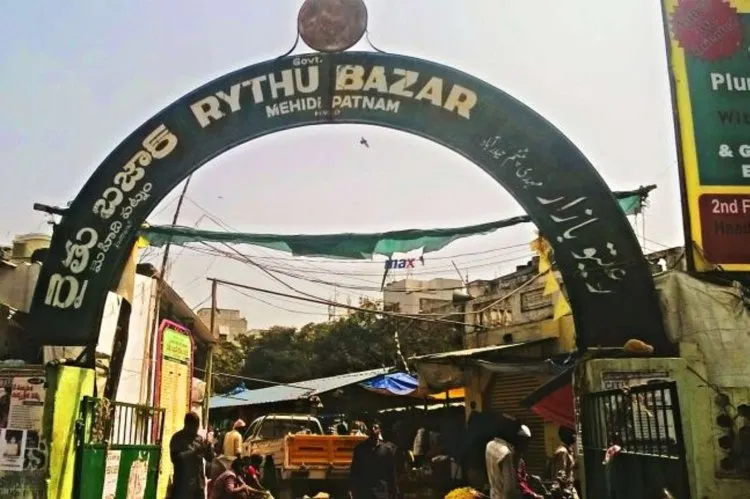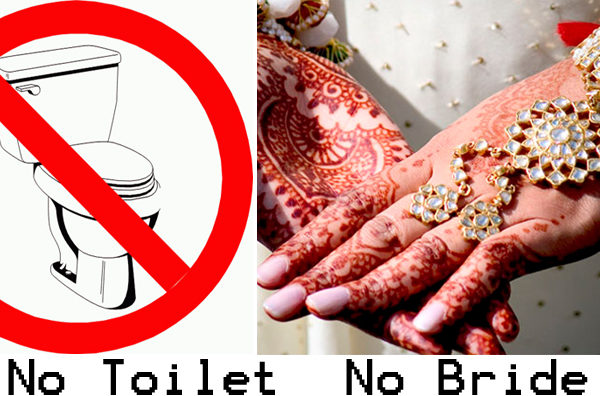Painting Religious Symbols Couldn’t Stop Indians From Urinating on Walls

Desecration or insult of religious symbols or objects can lead to the massacre in India. But that is limited to some specific minority groups only, such as in the case of beef. Otherwise, Indians don’t mind peeing on walls painted with their holy signs.
It’s not that the government and aware people are not trying to encourage the public to use public toilets to urinate and defecate. In the last one year, Indian government claims to have built 8 million toilets. But the availability of toilets does not make much difference as urinating in open, against walls has become a habitual and socially accepted practice.
Also Read: Indian Villages go Offbeat to Stop Open Defecation
For example, the Rythu Bazaar in Mehdipatnam, a farmer’s market in Hyderabad, is always stinking so bad that people are forced to hold their breath while crossing it. There is a public toilet at the end of this wall, but people still prefer the wall.

Manager of the public toilet, run by the Greater Hyderabad Municipal Corporation, spent from his pocket on painting religious symbols all over the wall to discourage people from urinating on it. Sadly, the public didn’t mind peeing on holy symbols of their own religion.

A message on the wall warns violators with the imposition of Rs 500 fine, but no one cares about it.
According to Ranjit,
We have tried everything over the past two months. We thought people won’t urinate or spit if religious symbols are painted. I personally spent some money from my pocket and wired the edge of the wall and repainted it once. Even that didn’t deter people.
The available public toilet charges only Rs. 2 ($0.031), but that, too, sounds expensive to people, mostly hawkers and laborers. If a person uses public toilets 10 times a day, then his daily expense stands at Rs. 20 ($0.307) per day.

So, even God has failed to tame the Indian public. A similar initiative was taken up a couple of months ago in which a portion of a wall in Mehdipatnam was painted with holy sings, but it didn’t make any difference. People still spit and urinate on the wall.

While cow protection groups are lynching people on rumors of beef eating and cow smuggling, rarely any of these groups realize that unhygienic conditions cost India more than $50 billion a year through premature deaths and hygiene-related diseases.
Also Read: Indian Villagers Worshiping Newly Built Toilets Instead of Using Them
The condition includes illness, lost productivity and other consequences of fouled water and inadequate sewage treatment, which saps 6.4 percent of India’s gross domestic product (according to a 2006 study).
In 2015, Delhi suffered from the worst ever dengue outbreak with at least 6.500 people infected so far. One of the causes was stagnant water in drains blocked by garbage.
According to a report published in USA Today,
Many of the millions constructed in rural India lie unused, while people continue to do their business in the fields. Reports say the new facilities are sometimes used instead to store rice or keep goats, to the extent that the Ministry of Drinking Water and Sanitation announced plans to send inspectors door-to-door to monitor just what people are doing in rural toilets. The failure is often blamed on a lack of awareness about hygiene. Yet these relatively inexpensive toilets, which discard waste into shallow pits rather than septic tanks, still require someone to empty the contents manually.
India and Indian people are ridiculed by other countries for littering, open defecation, open urination and spitting. India’s religious values do not seem to preach lessons on cleanliness and hygiene. While India is doing great in terms of economic growth for the past 10-15 years, it has still not moved forward in terms of cleanliness and hygiene.
Images: The Quint



1 thoughts on “Painting Religious Symbols Couldn’t Stop Indians From Urinating on Walls”